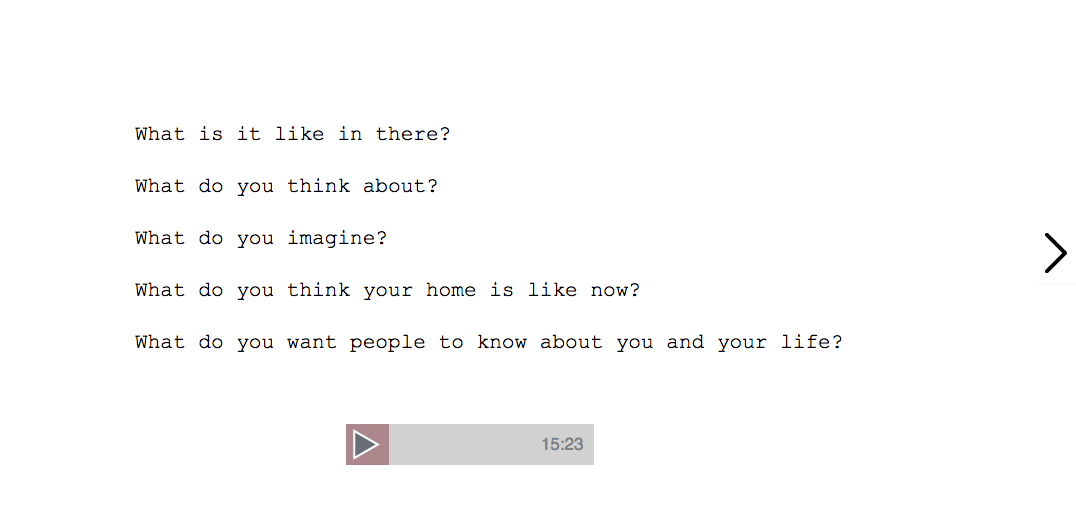inside voices
2016
 “I’m going to start with Attica … If you can hear me? … When I came up in 1987 to Attica, as soon as I walked in the door, I could feel the tension so thick you could cut it with a knife.”
“I’m going to start with Attica … If you can hear me? … When I came up in 1987 to Attica, as soon as I walked in the door, I could feel the tension so thick you could cut it with a knife.”
[This site is now down, but you can read about the piece in Paper Mag.]
inside voices is a netart piece, part of NewHive‘s series of commissioned artworks exploring privacy, surveillance, and prison reform. This piece is as much an example of digital storytelling as it is a work of art. Because of the sensitive and very personal nature of the material in the piece, I really didn’t feel like my job was to make much of an intervention or do much editing at all. I wanted to tell the story of incarceration in a specific and intimate way: the public has access to a lot of statistics, but not to a lot of personal stories. It is hard to understand the impact of this practice without knowing about life on the inside, but of course the whole punishment of prison is that you don’t get to share your life.
Prisons are heavily monitored and surveilled, but there is no opportunity for connection. Just being watched or recorded isn’t the same a sharing your story. This piece is interested in trying to subvert that and in finding a way of articulating that difference – how is it that someone can be so closely watched and so isolated at the same time, and what is the role of technology in making this happen?
This turned into a project about trying to talk to someone in prison about their life, to get their voice out of prison. I worked with Nikki Zeichner, a friend who is a criminal justice attorney and an artist, who works with incarcerated people. I didn’t want to use this person’s story as “raw material” for my art – I just wanted to share the story that he had to tell, and I wanted to talk to him. The process of getting through to him and of recording his voice took months. In the end, my work on this project was largely about navigating a bureaucracy and developing relationships.
In its “final” form the piece is now a website with a very simple presentation of audio recording of the stories that Jamel (my collaborator) told (and that the lawyer approved). It is a long recording and asks the audience to engage in a kind of behavior that is not typical online: to stay on one page and pay attention to someone’s life. Jamel is a great storyteller. There is a juxtaposition of the length of his incarceration (he is in the 31st year of a 62 year sentence; including 7 years in solitary confinement for organizing a reading group) and our typical online behavior (most viewers spend about 15 seconds on a website).
In other pages on the website I document the process of trying to reach him: writing letters, trying to set up an account that would pay for his calls to me, his attempts to call and my inability to call him back, etc. I also use hyperlinks to gesture to the things that we mentioned in our discussions but could not delve into because of the fact that we knew that the phone call was surveilled, such as the Attica uprisings in 1971, a short story Jamel wrote, and the then ongoing prison strike.